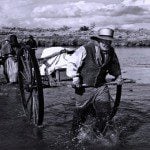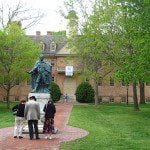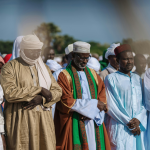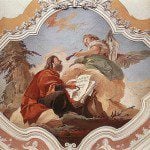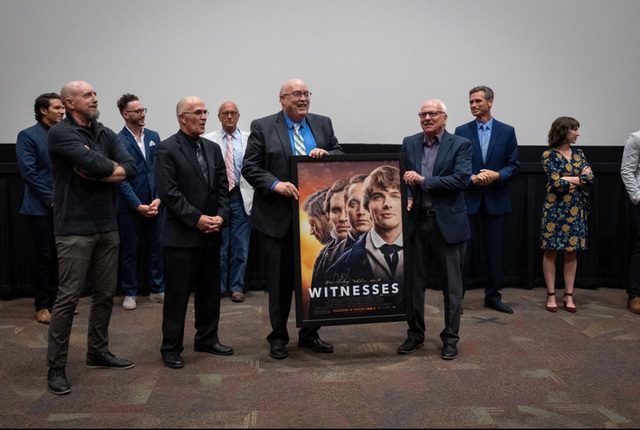
***
First, though, this brief excerpt from an interview with Y’r obd’t servant went up today in LDS Living:
***
This article, by my longtime friend, department colleague, and former missionary companion Stephen D. Ricks, was just published a few minutes ago in Interpreter: A Journal of Latter-day Saint Faith and Scholarship:
“Psalm 105: Chiasmus, Credo, Covenant, and Temple”
Abstract: In this essay Stephen Ricks takes a close look at the literary structure of a psalm, reintroducing us to chiasmus both in modern and ancient texts, including the Book of Mormon, then uses this literary structure to show how the psalm contains the basic historic credo of the Israelites, as seen in Deuteronomy and mirrored in 1 Nephi 17. Ricks then goes on to show how an essential part of the psalm is a covenant (“a binding agreement between man and God, with sanctions in the event of the violation of the agreement”), which ties it back to the temple. Ricks shows this by pointing out the points of covenant: Preamble, review of God’s relations with Israel, terms of the covenant, formal witnesses, blessings and curses, and reciting the covenant and depositing the text. This form is maintained in Exodus 19, 20, 23, and 24, and in the Book of Mormon in Mosiah 1-6. Psalm 105 follows this form, too. In the sacrament prayers, which in Mormon understanding is a covenant, points 1 to 5 are also present.
[Editor’s Note: Part of our book chapter reprint series, this article is reprinted here as a service to the LDS community. Original pagination and page numbers have necessarily changed, otherwise the reprint has the same content as the original.
See Stephen D. Ricks, “Psalm 105: Chiasmus, Credo, Covenant, and Temple,” in Temple Insights: Proceedings of the Interpreter Matthew B. Brown Memorial Conference, “The Temple on Mount Zion,” 22 September 2012, ed. William J. Hamblin and David Rolph Seely (Orem, UT: The Interpreter Foundation; Salt Lake City: Eborn Books, 2014), 157–170. Further information at https://interpreterfoundation.org/books/temple-insights/.]
***
And now once again, as I’ve been doing of late, here are some links to past articles in Interpreter that you may have forgotten or even missed:
Elliott Jolley, “Gazelem the Jaredite”
Abstract: Alma refers to Gazelem in his instructions to his son Helaman in Alma 37:23. This article proposes and explores the concept of identifying Gazelem as a Jaredite seer. Other theories of the identity of Gazelem are addressed in this article but not explored in depth. It discusses the full context of Alma’s words, the Jaredite secret combinations and their oaths, Gazelem’s seer stone, and the Nephite interpreters. Additionally, it proposes a possible timeline that Gazelem lived among the Jaredites. It also discusses the usage of “Gazelam” as a substitute name for Joseph Smith in early editions of the Doctrine and Covenants.
Steven T. Densley, Jr., “Should We Apologize for Apologetics?”
A review of Blair G. Van Dyke & Loyd Isao Ericson, eds., Perspectives on Mormon Theology: Apologetics. Greg Kofford Books, 2017, 279 pages with endnotes and index. $25.95 (paperback).
Abstract: An analysis of the history, scope, and effectiveness of Mormon apologetics is long overdue. Unfortunately, Perspectives on Mormon Theology: Apologetics falls short of providing an in-depth analysis of the field and instead provides a very limited history, very little discussion of the scope of Mormon apologetics, and little discussion of the impact of Mormon apologists on Mormon thought. Furthermore, no attempt is made to discuss how apologetics has affected the arguments of critics of Mormonism. While a few articles do approach apologetics in a positive way, the work is largely critical of the activity of defending the Church with scholarship or of providing academic research to help support the testimonies of members of the Church.
Louis C. Midgley, “Marjorie Newton on “The Mormons in Australia” — A Retrospective Review”
A Review of Marjorie Newton, Southern Cross Saints: The Mormons in Australia, foreword by Lawrence Foster (xiii-xv). (Laie, HI: Institute for Polynesian Studies, 1991). xxvi+283 pp., with a glossary of Latter-day Saint Terms (257–59), Bibliography (261–71), Index (273–83). Softcover (out of print, but copies are still available).
Abstract: This is a survey of Marjorie Newton’s account of Latter-day Saints in Australia which identifies the roots of her agenda — that is, what she was striving to accomplish in her first book in 1991 (and the other related essays) which she published before turning her attention to a criticism of the faith of Māori Latter-day Saints, first in 1998 and then in 2014. Midgley locates in her early publications on the Saints in Australia early signs of her controlling cultural Mormon agenda and hence how and why she insists that there has been a trampling of the Māori culture by what she considers a Mormon version of American cultural imperialism.
Stephen O. Smoot, “The Divine Council in the Hebrew Bible and the Book of Mormon”
Abstract: The Book of Mormon purports to be a record that originates from the ancient Near East. The authors of the book claim an Israelite heritage, and throughout the pages of the text can be seen echoes of Israelite religious practice and ideology. An example of such can be seen in how the Book of Mormon depicts God’s divine council, a concept unmistakably found in the Hebrew Bible (the Christian Old Testament). Recognizing the divine council in both the Hebrew Bible and the Book of Mormon may help us appreciate a more nuanced understanding of such theological terms as “monotheism” as well as bolster confidence in the antiquity of the Nephite record.
Gary P. Gillum, “Miracles in the Book of Mormon”
Review of Alonzo L. Gaskill, Miracles of the Book of Mormon: A Guide to the Symbolic Messages, 2015, Springville, UT: Cedar Fort, 447 pp. + bibliography, appendix of Brief Biographical Sketches of Ancient and Modern Non-LDS Sources Cited, index, etc. Hardbound. $27.99.
Abstract: Author Alonzo L. Gaskill has used his considerable scholarly and spiritual skills to provide the reader with a book that describes and applies to our lives the miracles found in the Book of Mormon, some of which may have slipped the reader’s eyes, mind, and heart.
Stanford Carmack, “Barlow on Book of Mormon Language: An Examination of Some Strained Grammar”
Abstract: Comments made by Philip Barlow on Book of Mormon language for an Oxford-published book are examined. Inaccuracies are pointed out, and some examples are given that show matching with 1611 King James usage as well as with other earlier usage. One important conclusion that can be drawn from this study is that those who wish to critique the English language of the Book of Mormon need to take the subject more seriously and approach it with genuine scholarship, instead of repeating earlier errors. This has a direct bearing on forming accurate views of Joseph Smith and Book of Mormon translation.
Posted from San Diego, California



